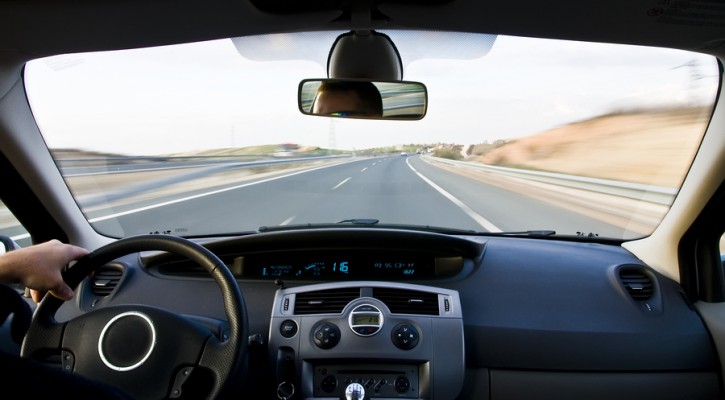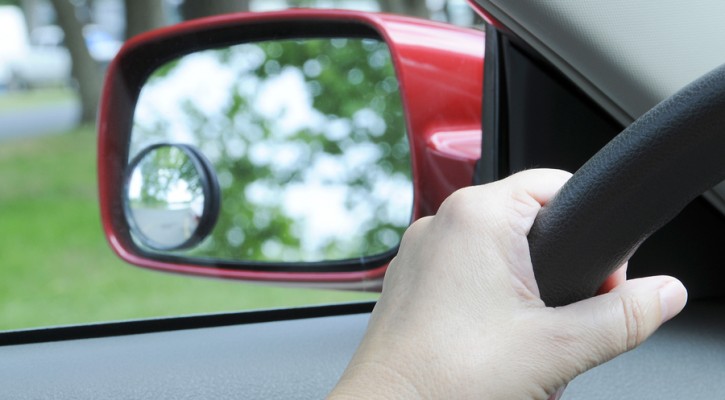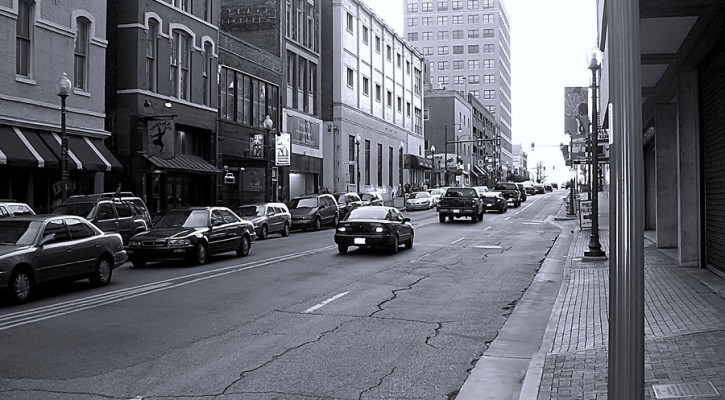
Count to Three, Live Crash-Free
March 19, 2015
One of the oldest lessons in the book is also among the most important: When following another vehicle in traffic, always remain at least three seconds behind them. That’s the 3-Second Rule, and it’s a rule that could save a life.
Ask anyone. Ask the driving instructor, the school bus driver, or the trucker with hundreds of thousands of miles under his belt. They would all vote this old-but-great rule of thumb among the best pieces of advice. Here’s why:
One… It’s simple.
Without having to do any exact calculations, this old rule is easily adaptable to real world variations. Bad weather? Extend the following distance by a second or two. Heavy traffic, icy roads, distracted drivers, tailgaters… you name it, we say add a second or two to it.
Two… It works.
Drivers that follow the 3-second rule will eventually witness a traffic accident, a crash, or even just a close call. More often than not, they will have enough time to avoid that incident, escaping with nothing but a memory of what might have happened.
Three… It saves lives.
In your driving future, there will be countless times when maintaining a safe following distance saves your life, your passenger’s life, and/or the lives of drivers all around you.
There are plenty more reasons to remember this simple rule – it saves gas. It saves repair costs. It lowers insurance rates. It makes the roads safer. It improves traffic flow – but let’s keep it simple and stick with that magic number. The number 3.

Use Your Mirrors
July 25, 2014
Mirrors. All cars and trucks come equipped with these low-tech, yet essential safety features. Unlike other higher-tech gadgets, these good old-fashioned reflections provide drivers with a constant, trustworthy source for predicting the future.
How can you use your mirrors to predict the future? All you have to do is look, really. By taking quick, occasional glances, drivers become more aware of their surroundings. And, situational awareness is they key to accurate predictions.
Check your mirrors periodically to maintain a mental 360-degree view of the highway. Note how many cars, trucks and motorcycles are surrounding you. Note how fast or slow they are going. Keep an eye out for speed-demons, distracted drivers and other erratic behavior. Look out for people weaving in and out of lanes. And, watch out for vehicles slowly creeping into your blind spot.
By keeping track of all these traffic nuances that surround you, you can better prepare for quick changes and easily predict emergency situations. You will know where those less-visible motorcycles and scooters are. You will know where the crazies are heading. And, you will know where you need to be in order to drive safely.
Never underestimate the importance of your mirrors. They are there for a reason, so use them and use them often.

The Art of Parking
July 21, 2014
You may know how to drive, but do you know how to park? Parking is an essential skill. Without it, we’d be stuck on a perpetual drive, a never-ending commute that would quickly wear down that new-driver excitement. That’s why we’re here to cover all the basics when it comes to The Art of Parking.
There are only a handful of parking styles that most drivers must master. We’ll start with the easiest and work our way up:
The Driveway
Parking in a driveway is pretty straight forward. However, there are a few tips to consider before pulling in:
- Take a nice, wide turn into the driveway to avoid hitting the curb, the mailbox, or anything else on your way in.
- Try to park straight and centered to make backing out easier.
The Basic Parking Space
Parking in a basic parking space is usually a simple task. These spaces can be found in parking garages and parking lots. They are marked in front of corner stores, grocery stores and shopping centers, as well as at the park and at school… basically, they’re everywhere. When parking in a parking space, keep these tips in mind:
- Take a wide turn into the space for straight, centered parking.
- If another car is parked at an angle or is too close to the line, try to avoid parking right beside it. This will cause you to park off-center, causing the next driver to have to park off-center. Plus, if that car leaves before the you, then you will look like the person who doesn’t know how to park right.
- Be sure to pull all the way into the space so that your back end isn’t sticking out.
- Be careful not to pull too far up. You may hit the curb. If you’re really unlucky, you may catch your front bumper on the curb and cause serious damage. If you’re really, really unlucky, you may also damage the curb and have to give the store-owner your insurance information.
- Beware of ONE WAY markings. They can be marked with arrows on the asphalt or on signs.
- Drive slowly and carefully when looking for an open spot. Parking lots and parking garages are full of pedestrians, children, and other drivers. Most of these people are only half-way paying attention to their surroundings. The rest are completely oblivious.
The Street
Most street parking involves the dreaded Parallel Parking technique. This skill may be intimidating at first, but once you master it you will be able to park just about anywhere (without it, you will always have a hard time parking in urban areas).
Begin by practicing with cones or cardboard boxes in a private drive or empty parking lot. Once you have found a safe place to learn, try using this common parking technique: The “S” Method.
- As you pull up to the spot, slow down and turn on your blinker.
- Pull up three feet away from the car you want to park behind. Align your back tires with the other car’s back bumper.
- Put your car in reverse and turn your wheels all the way to the right.
- Slowly back up until you’re at a 45-degree angle. Then stop.
- Turn your wheels all the way to the left.
- Continue to back up very slowly until you are parallel with the curb.
This method takes a lot of practice to make perfect. Once you have it down, you should be able to park anywhere without holding up traffic.
The Hill
Sometimes, you will find yourself having to park on a hill. When this happens, it’s important to remember how to park on an incline safely and correctly:
- ALWAYS use your emergency brake.
- When parking upwards on a hill, turn your front wheels to the left.
- When parking downwards on a hill, turn your front wheels to the right.
By learning how to park quickly and correctly, you will feel more confident driving in new places and have more freedom to travel around crowded downtown streets.

Independence Day
July 3, 2014
Eager to get that first taste of freedom? That first sweet sip of complete independence as you drive off with your first license? Well, don’t let your first independence day become your last. Drive like a pro with these teen driving tips:
- Pay Attention! It’s easy to get distracted by the excitement of your first day as a new driver. Don’t let that excitement cause a collision early in your driving career. Channel that energy to the part of the brain that keeps you alert and ready to react.
- Watch Your Speed. The rush you feel on that first day can be a bit overwhelming. Your blood is pumping, your heart rate is in hyper-mode and the urge to go faster is hard to fight. However, you must maintain control. Driving too fast can result in a wreck, or at the very least, a speeding ticket.
- Remember the Basics. You might have aced the test, but do you remember what to do at a 4-way stop? Do you yield if you are turning left? Do you yield if you are turning right? Who yields when you are entering the freeway? Be sure to mentally prepare yourself for driving without the help of parents or instructors.
- Look Twice. Whether you are turning, merging, or changing lanes, be sure to always look twice. Check your mirrors, then check your blind spot to be sure you’re not about to plow into another vehicle. And, don’t forget to use your BLINKERS!
- Take Your Time. It’s not a race. Take your time when driving. Take your time when parking. Take your time (and double check!) when pulling out of a parking space or driveway. Take your time when turning or merging. There’s no reason to rush things. You are young, so drive like the cool easy rider that you are.
Now get out there and live the sweet life of freedom and independence with your brand new drivers license! Good luck and happy Independence Day!
